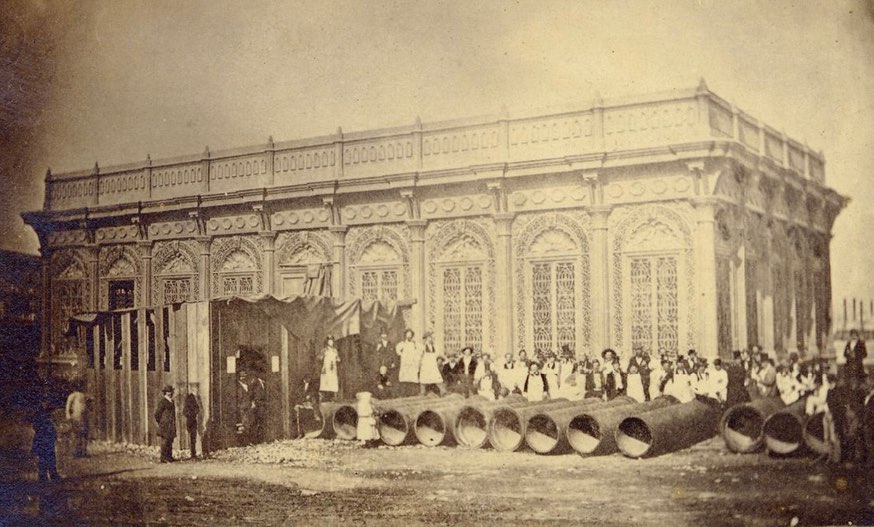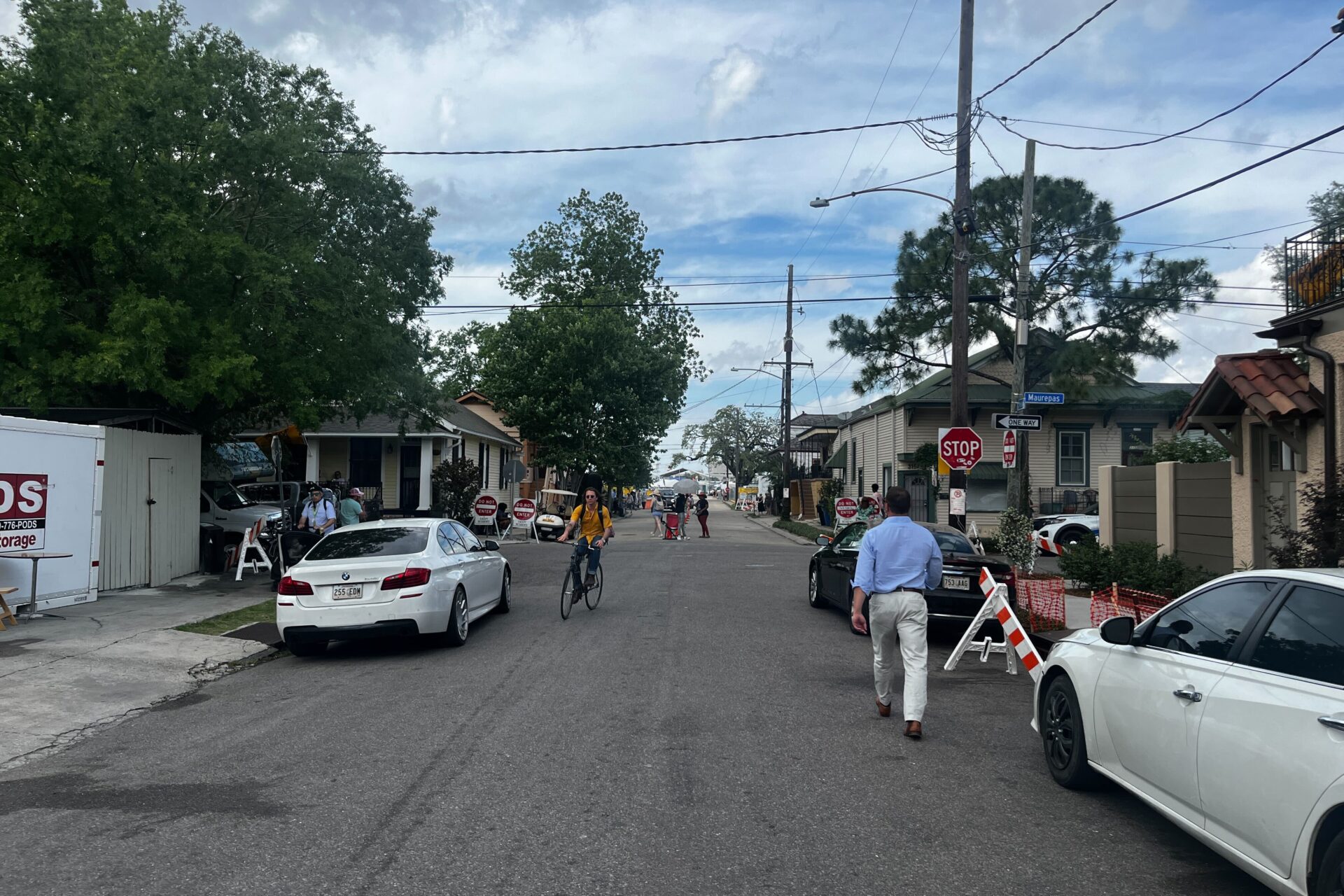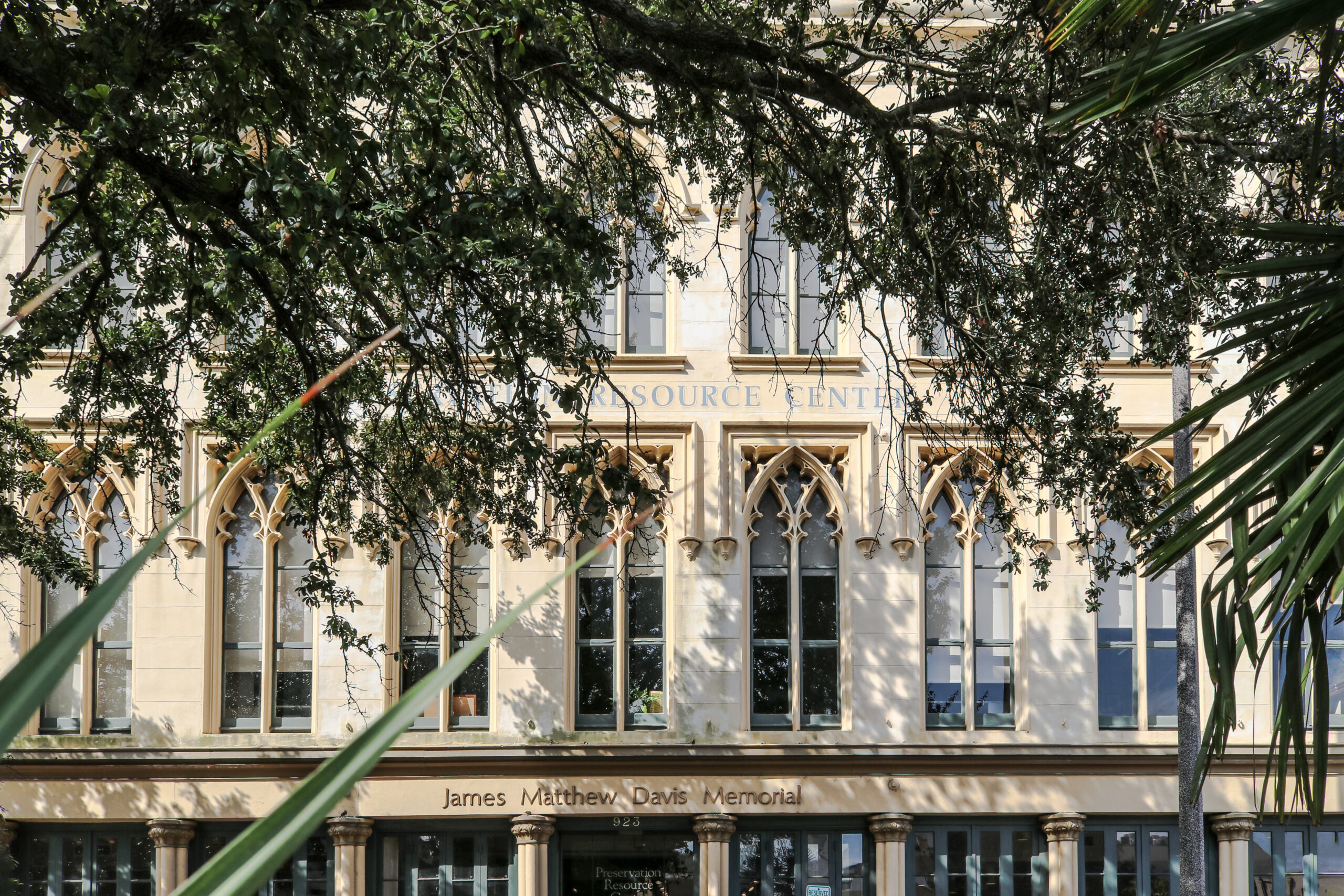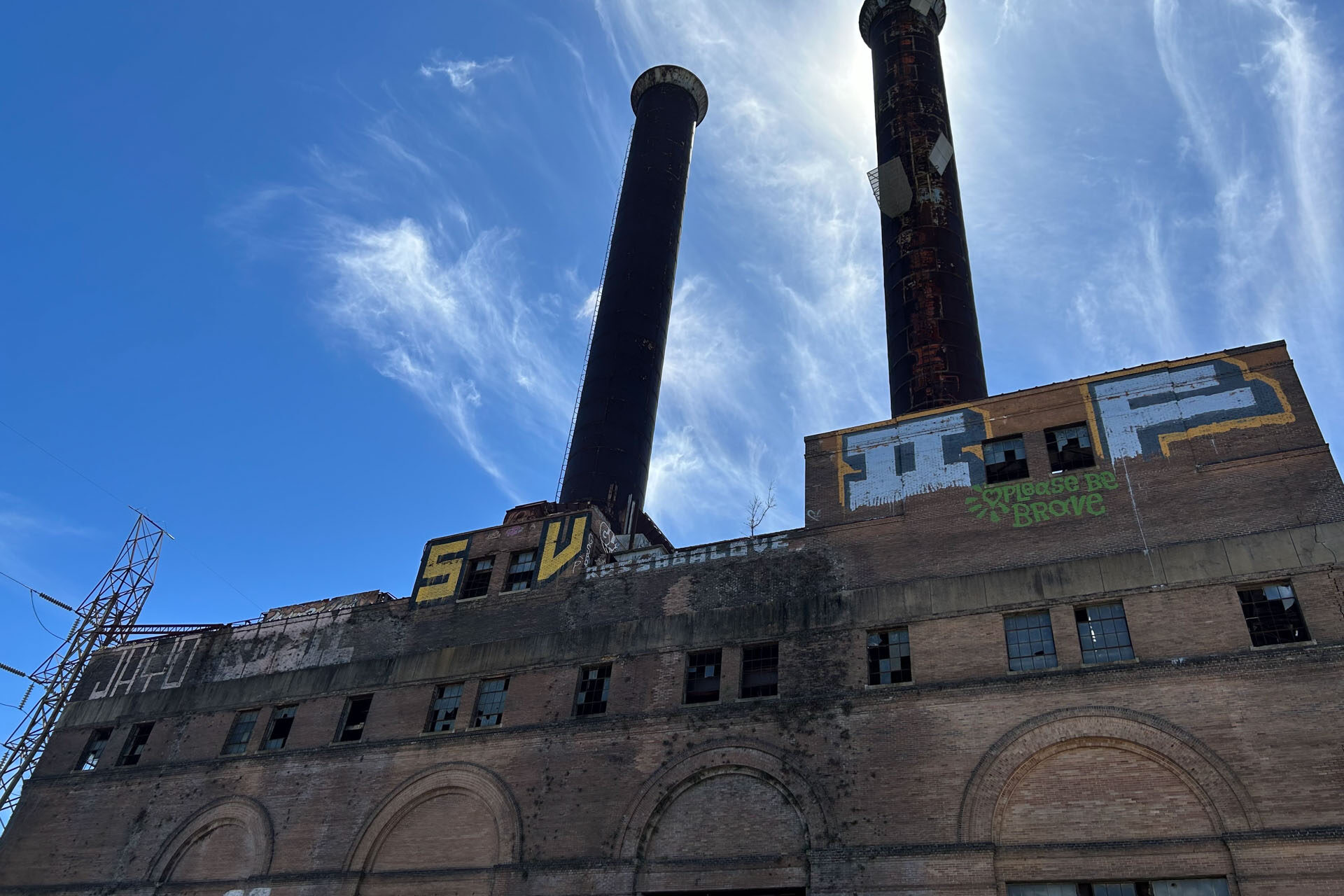On August 16, 1861, the New Orleans Free Market opened at the base of Canal Street. In April of that year, the Union Navy began a major blockade of ports across the South as part of the Civil War. Combined with a steep decline in the flow of goods down the Mississippi River into Confederate states, New Orleans was thrust into a large-scale economic depression. With families growing hungry, the city was pressured to open a free marketplace where residents could obtain much-needed items.
The city opened the market in an ornate cast-iron building at the base of Canal Street in front of the Mississippi River levee. Constructed in 1859, the building had been built as a “water works station” but was never used for that purpose because of the war. To open the market, farmers from north of the city donated crops and other items, and residents were encouraged to donate what they could. Residents who qualified were entered into a registry and allowed to visit the market to take what they needed.
On Aug. 16, 1861, the market’s first day, 728 families were on the rolls, and by the end of August, that number had nearly doubled. “Never in all the days of civilization…was there a Free Market sustained on such an extensive scale,” wrote the editor of the Daily Picayune in September 1861. The market became a model for other cities whose populations were feeling similar effects of the war.
The Free Market of New Orleans would only exist for about a year, and was shut down after Union troops captured and occupied the city in 1862. The market building was demolished in 1874.
Historic image taken from the Louisiana Digital Library. Present day images and research by Jack Gillespie.








